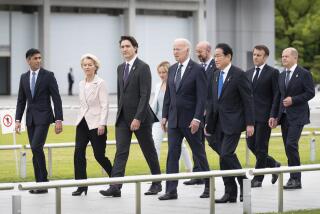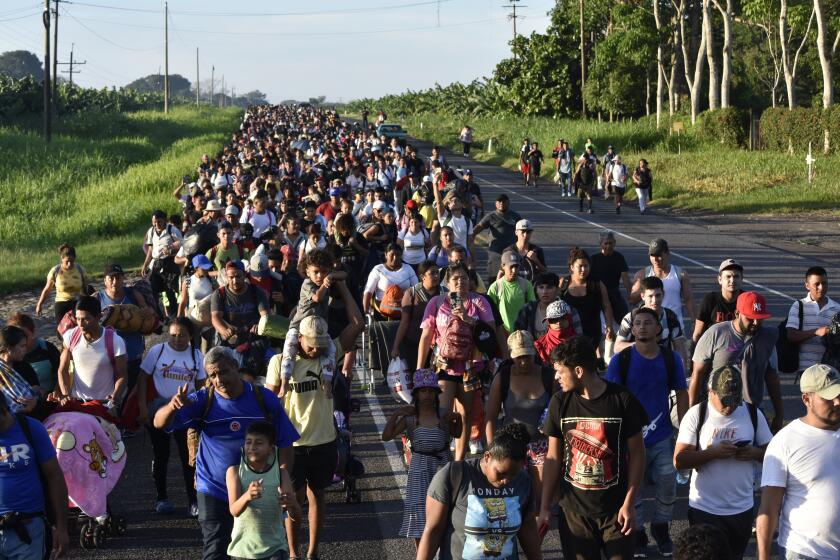‘We Were a Speed Bump for the North Koreans’
Did U.S. infantrymen massacre more than 100 South Koreans in 1950 during the chaotic early weeks of the Korean War? A Pentagon investigation now underway must answer that question. Yet the more important questions are: How could young American soldiers do such a thing? Can we keep it from happening again?
The current Pentagon investigation involved H Company, 7th Cavalry. At the time, I was a second lieutenant with L Company, 21st Infantry, about 25 miles east of No Gun Ri.
Our “occupation army” in Japan was not ready, in any sense, for the Korean War. The nuclear bombs that took out Hiroshima and Nagasaki seemed to have ended fighting, as the Army understood it. American soldiers were in a state of psychic disarmament. Inertia and the distractions of Japanese “social life” finished our battle readiness. Our weapons were relics, often inoperable. Our communications equipment, radios and wire were too old and beat up to function in heavy dew, let alone in monsoon rains.
We went to fight tanks in 1950 with a piece of failed anti-tank trash (the 2.36-inch “bazooka”) that gravediggers in World War II often found ground up in the bodies of GIs because it could not stop tanks. The terror that bazooka-proof tanks imposed on exposed infantry makes “blind panic” seem a commendation. The myth of airplanes coming from the heavens to rescue our soldiers melted with the early morning mist and low-hanging clouds. The rain took out the radios to our supporting artillery; tank tracks took out the telephone lines that supplemented the radios.
None of these damning mechanical and operational faults hinted at the size of our most grievous, distressful battlefield problem: the continuous transfer of personnel well before they could learn their jobs and the capabilities of their comrades in arms, whether chiefs or subordinates, or of the enemy. Strangers do not make effective fighting units. Task Force Smith was a 540-member force that flew in from Japan five days before fighting its first battle in Korea on July 5, 1950. The 30-man platoon assigned to me in Task Force Smith was my fourth one in the nine months before this battle.
Yet we went to Korea believing that the North Koreans would turn and head back north as soon as they discovered we were there. Sadly, we were no more than a souvenir-laden speed bump for North Koreans at our first blocking position. Our seven hours in position bought us only one precious day. Our next five days delaying their move southward toward Pusan cost the division the best part of three battalions.
These North Korean successes were not lost on the American units coming over from Japan. The North Korean army’s successful technique of pinning down the 24th Infantry Division’s battalion-sized units with frontal attacks, circling around their exposed flanks and installing themselves behind these battalions to then launch coordinated infantry-tank attacks over the top of our improvised defenses could not be countered. The division commander was captured, and the remnants of two regiments were lost in Taejon. U.S. prisoners broadcast their fates and apologies over Seoul City Sue’s radio station.
Pulling back south toward Pusan, most American units’ hopes of reembarking, including the unit accused of the slaughter at No Gun Ri, were shared by many people. The Army’s official history quotes this outfit’s war diary as saying, two days after the supposed slaughter at the bridge, that the “increased . . . uneasiness of the untested staff and troops . . . had become magnified and exaggerated.” Reports of an enemy breakthrough caused the withdrawal of the 2nd Battalion, “an untried unit, scattered in panic. That evening, 119 of its men were still missing. In this frantic departure from its position . . . the battalion left behind a switchboard, an emergency lighting unit and weapons of all types. After daylight, truck drivers and platoon sergeants returned to the scene and recovered 14 machine guns, nine radios, 120 M-1 rifles, 26 carbines, seven Browning automatic rifles and six 60-mm mortars.”
These units and their men were not remotely ready for the costly operations that they were sent to do in Korea. The ignorance of their chiefs was matched only by their incompetence. Men paid for this shameful neglect in blood, pain and imprisonment.
Were all units like this? Of course not. But enough were to make our Army’s subsequent disgraceful conduct undeniable, despite what may have been a successful cover-up until now. How can we keep this from happening again? A fruitful beginning might be telling the truth and avoiding false reports designed to ensure promotions for individual commanders.
More to Read
Sign up for Essential California
The most important California stories and recommendations in your inbox every morning.
You may occasionally receive promotional content from the Los Angeles Times.






